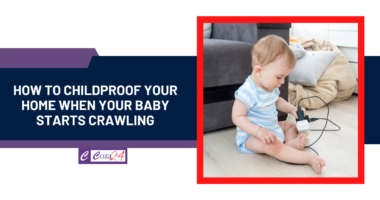Let’s take a look at “Parents Guide To Learn How To Get Your Babies To Roll Over” Rolling over requires more muscular strength and coordination than many other milestone-related behaviors.
A newborn must have the self-assurance and deliberateness to do the required movements to choose to roll over. Frequently, when the infant approaches the age of 5 months, you will be able to spot several indicators that the baby is prepared to roll over, such as rising muscle strength and a heightened interest in enjoyable activities.
Additionally, you may observe multiple possibilities to assist your infant in learning to walk independently, and you will start to identify any potential obstacles in their achievement of this milestone.
Your baby is getting close to rolling over if he or she can lift their heads and if they can start to glance side to side while on their forearms. Before rolling over is feasible, numerous muscle groups that make up the baby’s body and a myriad of muscles must be strong.
The infant has been learning to use various strengths ever since his birth. They can exert more control over the body and motions by the age of four months. This aspect will also be crucial because rolling over requires momentum, especially when moving from the back to the stomach.
Table of Contents
- 1 Parents Guide To Learn How To Get Your Babies To Roll Over
- 2 Why Do Babies Do Roll Over?
- 3 When Do Babies Start Rolling Over?
- 4 How To Protect Your Rolling Child?
- 5 What To Do If A Baby Rolls Over While Sleeping?
- 6 What Developmental Milestones Follow The Baby Rolling Over?
- 7 When Do Babies Begin To Crawl?
Parents Guide To Learn How To Get Your Babies To Roll Over

It’s normal for parents to worry about whether their child will meet the next developmental milestone “on time.” The ability to roll over is the first of several significant physical milestones that a child will achieve.
Baby milestones can be compared to building bricks. As soon as they reach one developmental milestone, they start to prepare for the next.
Their physical development begins when they roll over from back to belly and belly to back. From there, they will start to learn how to scoot, crawl, and become actively engaged in play.
Several Tips For Helping Your Baby Roll Over
Help your baby roll over by doing so as early as two weeks old (always check with your pediatrician for your baby specifically). Helping your baby roll over can help their body become accustomed to the motion and the many muscles needed to perform this ability.
They will require less assistance as they age and become stronger
Roll them over with your hands. Straighten the leg on the side they will be rolling to, and while still bending the opposite leg, fold it over the straight leg (see images below). Move your infant gently from their hip to their stomach. If necessary, reposition the infant to prevent their hands from getting entangled beneath it.

Reduce your assistance gradually to check if the infant can finish the roll independently.
When your infant is older and more robust, you can add a towel that has been tightly coiled under the back to test whether the child can roll all the way.
One excellent strategy to promote acquiring this new skill is to keep your infant interested in and engaged with toys. By encouraging your baby to look around and move their head from the midline to side to side, carefully placed toys can prevent your baby from rolling. This facilitates the rolling-over process’ natural evolution. The toys you surround your baby with will pique her curiosity. To attract their attention, place toys purposefully above and to their side.
The neck, torso, and arms get a lot of strengthening through tummy time. During tummy time is most likely when your baby will first turn over from tummy to back.
If your infant dislikes being on his or her stomach, tummy time might be challenging. Here are some fantastic ideas to mix up tummy time.
Put your infant in various postures; you can work and build various muscle areas. You can also keep your baby from getting irritated by moving them into different positions.
Why Do Babies Do Roll Over?

Your baby’s body will become stronger and become ready for more advanced movement if you allow them to move around and stretch. They will reach out for toys and begin to utilize their hands and fingers more when they are on their bellies. You may assist your baby in learning to sit up and regulate their head movements at this stage. They’ll eventually require less assistance.
Their physical and cognitive abilities can benefit from learning these various moves and emotions.
Between three and six months, the majority of infants will roll over. During tummy time, they can initially try to roll over onto their back and grasp for toys. As they become stronger, babies can roll from their back to their stomachs.
When Do Babies Start Rolling Over?

You could notice that your baby can roll from back to the side slightly between the ages of three and four months. After this, at around 4 to 5 months of age, your infant may start to roll over, frequently from their stomach to their back.
Babies frequently begin rolling from their front to their back, but it could take a few more weeks for your child to master moving from back to stomach.
You will likely observe them using their arms to lift their head and neck and push up their chest before they really execute a roll. They risk rolling from back to stomach with even a slight change in equilibrium.
Your infant may roll before the age of four months, or they may prefer to roll from back to stomach first and master that skill before moving from front to back.
When rolling initially appears, it can happen at a variety of ages and in different directions, just like with all developmental milestones. However, consult your pediatrician if, by the time your child is 6 to 7 months old, they aren’t at all rolling over or demonstrating any interest in sitting up.
You and your partner could be surprised when your infant first rolls over! Early rolls are frequently thrilling for parents and frightening for infants. If your child sobs in surprise or shock after mastering a new ability, be ready to console them. (Try to keep a camera handy so you can get proof for the rest of the family and friends, too.)
How To Protect Your Rolling Child?

Your baby will have access to a whole new world once they can roll over, and that world does contain dangers.
Keeping an eye on your child while changing them on a raised changing table is always the best safety precaution. But as soon as your child starts rolling, they must always have an adult standing immediately next to them if they are on any raised surface.
Even when placed on the floor, you should keep a closer check on them because young newborns are capable of rolling into unsafe spaces and positions as they become mobile.
Your youngster rolling around can be a good indication that you should start childproofing if you haven’t previously.
The space where your child sleeps is one location where you should pay extra care to childproof. Any crib where your child sleeps must be free of toys, blankets, pillows, or crib bumpers that could suffocate them. (Ideally, a crib should have just a fitted crib sheet that covers the mattress flat and smoothly.)
It’s crucial to consider how your child is being put to sleep, in addition to inspecting the environment for safety.
Babies should never be placed in front of a bed; once they learn to roll over, you should stop swaddling them. Swaddling prevents babies from using their hands to get off their tummies, and the effort required to roll over can cause blankets or swaddles to come undone, increasing the risk of suffocation.
Around the time they start rolling, it’s not unusual for your child to go through a slight sleep regression. You might notice that your child is delighted about their new talent and constantly rolling about the crib, or your child might wake up in the middle of the night after moving into an uncomfortable position and being unable to roll back.
Fortunately, for the majority of infants, this stage only lasts a few weeks at most. The most straightforward approach for most parents is to simply put the baby on their back and make a short shushing noise to help them fall back asleep due to its transient nature.
The US Department has made certain recommendations for Health and Human Services.
It’s not necessary to roll a child back onto their back once they can roll over, according to Trusted Source, if they can sleep soundly in whatever position they choose to move into.
Sick baby syndrome risk be reduced; it is nevertheless advised to put a baby to sleep in their cradle on their back first (SIDS).
What To Do If A Baby Rolls Over While Sleeping?

You might notice that your baby begins to roll over in her bed at night after she starts rolling from belly to back and from back to stomach. Although you shouldn’t stop putting your baby to sleep on her back, even if she doesn’t remain in that position throughout the night, this is not causing alarm.
Your child is less likely to get stuck in a position where her breathing is compromised because she has the strength and mobility to roll onto her stomach and the capacity to notice difficulties when she is asleep.
She has also passed the high-risk period for SIDS, which peaked between the ages of 2 and 4 months and tapered off after that. She is now six months old.
Try placing your child in her crib on her back or side with one of her arms outstretched if you’re really concerned about her turning over to sleep on her stomach. She will likely roll onto her side with her arm out in front of her chest if she doesn’t tuck it below her. As a result, she will be slightly less likely to roll all the way onto her stomach.
Additionally, keep in mind that every baby develops at a different rate and that milestones like rolling over take time to achieve. Before your baby learns to push up on her forearms and roll onto her back, it may take weeks of tummy time. It may also take many more weeks for her to learn how to tuck her arm under her body or over her head in order to roll back onto her stomach.
Just give her plenty of chances to practice on a mat or blanket that will absorb the sporadic (and, tragically, unavoidable) head-bonk on the floor. When your child eventually performs her first flip, be sure to encourage her by giving her lots of praise and clapping.
What Developmental Milestones Follow The Baby Rolling Over?

Baby will soon be sitting up, initially with your help and then on her own, once they master the turning over skill and her neck muscles are strong enough to lift her head, both crucial motor development skills.
She might then begin to crawl and eventually learn how to stand up. She’ll be prepared to take her first steps and start walking on her own two feet once she can crawl and stand up to anyone.
Always see your pediatrician if you have any concerns regarding the timing or content of any milestones for your infant. Enjoy the journey as well, don’t forget! The most enjoyable year is the first one, when the baby rolls, smiles, coos, and walks.
When Do Babies Begin To Crawl?

Babies will rock back and forth on their hands and knees at the age of six months. This is a necessary step before crawling. The child may begin to crawl backward as he rocks before moving forward. Babies often start to creep and crawl at nine months of age. Some infants pull themselves along the floor in a commando-style crawl using their arms.
Allowing your infant to play on the floor in a secure environment away from stairs can help a youngster improve their ability to crawl. As the infant rocks back and forth, keep favorite toys just out of reach. Encourage the child to grab their favorite toy.
It’s crucial to childproof your home when your infant gains mobility. Lock up washing, lawn care, household cleaning, and auto maintenance items. Use safety gates and lock outside and basement doors.









